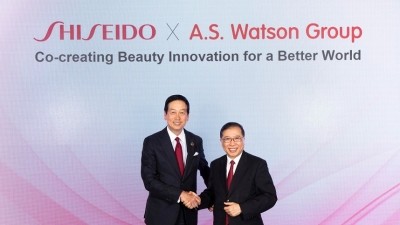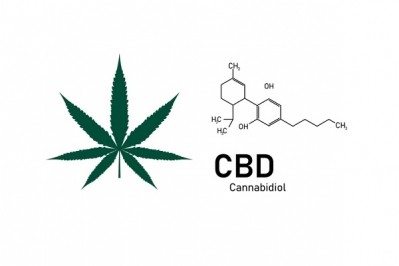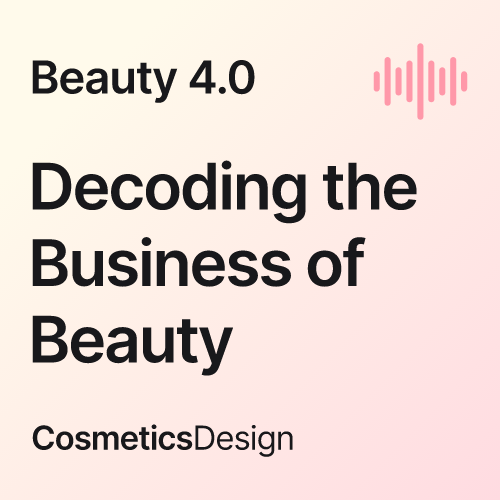Laws & Regulation: Top news on cosmetics regulation across the APAC region

1 – P&G and Unilever among brands caught up in India’s ‘profiteering’ dragnet
A semi-judicial body set up after the roll-out of India’s new goods and services tax in 2017 has been taking action against a string of FMCG companies, after accusing them of not reducing prices on a range of products even though tax had been cut on these.
P&G India and Hindustan Unilever are among the brands caught up in a dragnet conducted by the Directorate General of Anti-profiteering (DGAP), though they both deny the allegations of withholding lower prices from customers.
The DGAP is the investigatory arm under the finance ministry that reports to the top anti-profiteering body, the National Anti-profiteering Authority (NAA). Already, around 100 cases of alleged anti-profiteering have been referred to the authority.
2 – Securing sandalwood: Demand for sustainability and quality boosts Australia’s dominance
Increasing demand for high quality sustainable sandalwood oil will continue to increase Australia’s global market share, with India’s slice of the sector set to slip.
According to Natalia Nizkopoklonnova, business development manager of APAC for Down Under Enterprises, Australia currently supplies 80% of the world’s sandalwood.
“With India’s supply of sandalwood going down, Australian sandalwood will rise because of its quality and its sustainability.”
The Sydney-based firm supplies natural Australian oils has considered itself one of the major suppliers of traceable and sustainable Australian sandalwood oil.
Nizkopoklonnova estimate that the firm supports around 60% of sandalwood exports in the country.
3—‘Small sample size, questionable methodology’: Australian scientists react to sunscreen toxic absorption study
The results of a recent US Food and Drug Administration study into the toxic absorption of certain active ingredients in sunscreen have hit a nerve with academics in Australia.
Australia, which has taken the use of sunscreen extremely seriously for generations, did not feature in the research. Its academics, however, have reacted strongly to it, with some pointing to some significant flaws.
The paper, published in JAMA on May 6, recommended that active ingredients in sunscreen that are absorbed into the bloodstream above a certain level should undergo toxicology testing.
The FDA researchers had been seeking to determine bloodstream concentrations of four active ingredients. They looked at avobenzone, oxybenzone, octocrylene and ecamsule in four sunscreens applied four times per day for four days.
4 – Chinese cosmetics regulation: how does it work?
In this Editor’s Spotlight, we get an expert overview on thee Chinese cosmetics market regulations: which organisations regulate the market, and what do they require from beauty players?
Chinese cosmetics market is currently the third largest global market for cosmetics, following Europe and the US.
According to China’s National Bureau of Statistics, the total retail sales of cosmetics in China in 2018 accounted for over 260 billion yuan, with an annual growth rate of almost 10 %.
It is therefore no wonder that many western and other non-Chinese companies are looking at ways of taking their share of this lucrative market.
Apart from the increasing competition, one of major obstacles to achieving that goal is also ensuring regulatory compliance with the Chinese cosmetics legislation.
5 – Ingredients players come up with smart solutions to CBD regulation.
While regulators in the United States and the EU continue to mull laws that might enable the development of the hemp industry, cosmetic and personal care ingredient players have come up with intriguing ways of circumnavigating existing regulations.
While a number of the larger ingredient players are starting to supply CBD oil and other hemp related products, the recent New York SCC Suppliers Day proved to be a surprise platform for a new generation of CBD derivatives, carefully developed to tick all the regulator's boxes.
Some of the CBD-related ingredient solutions at the show were outlined in a recently published Cosmetics Design article by Deanna Utroske, which also highlights CBD testing technology.
But the most interesting development was the launch of a series of ‘cannabis ingredients without the cannabis’ from major players that included Ashland, Colonial Chemical and CLR Berlin.





![Indus Valley is working to corner 30% of India's online premium boxed hair colour market. [Indus Valley]](/var/wrbm_gb_food_pharma/storage/images/_aliases/wrbm_tiny/publications/cosmetics/cosmeticsdesign-asia.com/article/2024/07/26/indus-valley-aims-to-secure-30-of-india-s-online-premium-hair-colour-market-with-organic-offerings/17594932-5-eng-GB/Indus-Valley-aims-to-secure-30-of-India-s-online-premium-hair-colour-market-with-organic-offerings.jpg)
![[Getty Images]](/var/wrbm_gb_food_pharma/storage/images/_aliases/wrbm_tiny/publications/cosmetics/cosmeticsdesign-asia.com/china/china-focus-latest-developments-in-china-s-booming-beauty-market25/17606695-1-eng-GB/China-focus-Latest-developments-in-China-s-booming-beauty-market.jpg)
![Kosé has launched makeup brand Visée in Singapore as part of plans to reinforce its position in SEA. [Visée]](/var/wrbm_gb_food_pharma/storage/images/_aliases/wrbm_tiny/publications/cosmetics/cosmeticsdesign-asia.com/headlines/business-financial/visee-singapore-kose-aims-to-enhance-brand-visibility-in-sea-with-new-launch/17587264-1-eng-GB/Visee-Singapore-Kose-aims-to-enhance-brand-visibility-in-SEA-with-new-launch.jpg)
![ble C&C is set on reinforcing its competitiveness in China’s beauty market. [Missha]](/var/wrbm_gb_food_pharma/storage/images/_aliases/wrbm_tiny/publications/cosmetics/cosmeticsdesign-asia.com/headlines/business-financial/able-c-c-aims-to-strengthen-competitiveness-in-china-through-online-expansion-kol-collabs/17591626-1-eng-GB/Able-C-C-aims-to-strengthen-competitiveness-in-China-through-online-expansion-KOL-collabs.jpg)

![LG H&H genetic study says 23 genetic regions affect natural skin tone. [Getty Images]](/var/wrbm_gb_food_pharma/storage/images/_aliases/wrbm_tiny/publications/cosmetics/cosmeticsdesign-asia.com/article/2024/07/23/lg-h-h-discovery-of-genetic-skin-tone-factors-in-east-asians-potentially-key-to-skin-radiance-developments/17587210-1-eng-GB/LG-H-H-discovery-of-genetic-skin-tone-factors-in-East-Asians-potentially-key-to-skin-radiance-developments.jpg)

![DR.CI:LABO expects brand-supplier partnerships gain more public prominence as consumers interest in skin care grows online. [Dr.Ci:Labo]](/var/wrbm_gb_food_pharma/storage/images/_aliases/wrbm_tiny/publications/cosmetics/cosmeticsdesign-asia.com/article/2024/07/22/brand-supplier-partnerships-will-come-to-the-fore-amid-the-online-skin-care-landscape-dr.ci-labo/17576755-1-eng-GB/Brand-supplier-partnerships-will-come-to-the-fore-amid-the-online-skin-care-landscape-DR.CI-LABO.png)